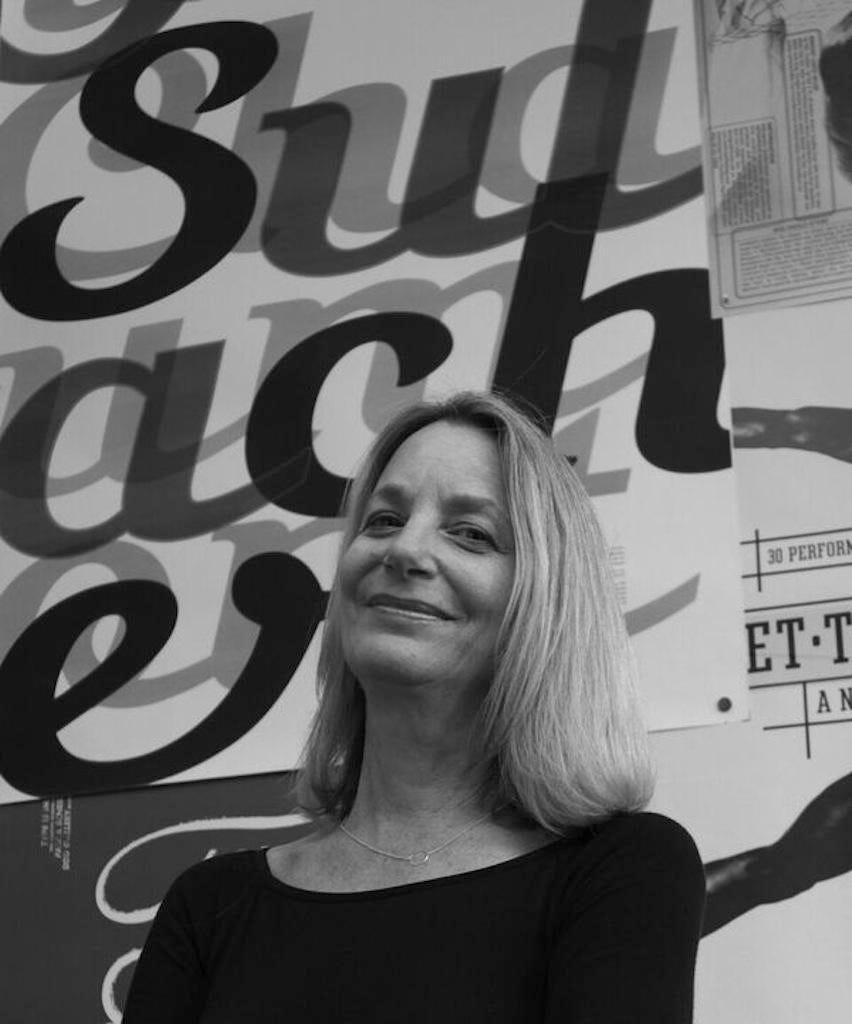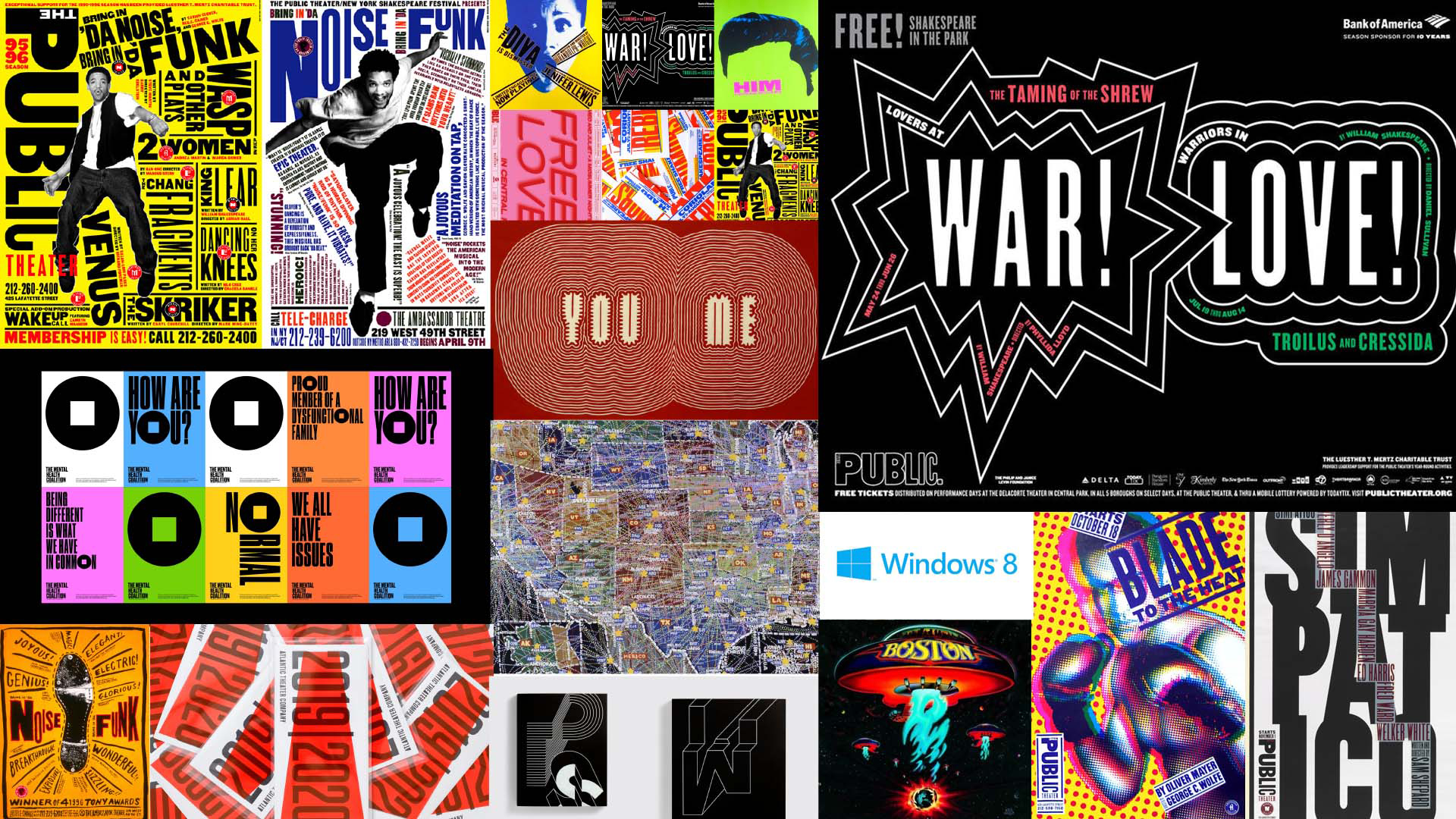
Pentagram Partners
Passion, Intelligence, Commitment
Introduction
Pentagram is owned equally and run by 23 partners, who work independently and collaboratively. This aspect alone makes this business very unusual (Element Talks, 2006). Their decision to refer to themselves as designers (in a much broader sense of the word) allows the partners to dip in and out of areas of interest and thus inform and enlarge their ideas and views (Element Talks, 2006). In turn, this research enriches subsequent designs and outcomes.
Natasha Jen and Paula Scher's contribution to their industry is examined here, along with how they gather and process information to produce their designs. An exploration of the scope of their work, the breadth of their professional careers and personal attributes will provide insights into the world of a high-level designer. Also explored is Pentagram’s (2019, a) conviction that “Great design cannot happen without passion, intelligence and - above all - personal commitment.”

Natasha Jen
As a graphic designer and partner within Pentagram, Jen continues to be an essential contributor to the world of design and can transition easily between various media genres. Jen’s work is comprised of many elements, including “brand identities, environmental design, multi-scale exhibitions, signage systems, print, motion and interactive graphics.” (Pentagram, 2019, b)
Such a flexible approach to design allows Jen to engage effectively with a range of designers. In one talk she delivered (99U, 2018) called ‘Design thinking is Bullsh*t’, Jen challenged the notion of Design Thinking. This term is commonly broken down into five consecutive steps, implying that their completion will provide the foundation for good design. Jen fundamentally disagrees with this viewpoint and has encouraged the design community to critique this term and the five steps involved in the process. Actively communicating her concerns in this way and going against widely held views demonstrates Jen’s passion and personal commitment to the design industry and Pentagram.
In response to the criticism generated by her initial talk on ‘Design thinking is Bullsh*t’, Jen clarified her thinking. In her view, the 5-step process was too simplistic and was not a universal solution for all design problems. Furthermore, using one medium to inform the design process was restrictive and prevented a more rounded basis from which to design. Jen adopts a multi-source research approach to design (Design Indaba, 2018, 8. 32). This, in turn, further fuels her commitment to challenging existing design perspectives.
Alternative ideas and frameworks are fundamental to the development of young designers in that they help to challenge and inform their thinking and practice. Jen has helped shape the next generation of designers in various ways. She served on the Board of Directors at the New York Chapter of the American Institute of Graphic Arts (from 2014 - 2017) and was also a guest critic for the Harvard Graduate School of Design and Yale University School of Art (Uys, 2017). Jen’s sphere of influence is inspiring. As a student, having access to Jen’s insightful thinking and other design viewpoints within the design world provides the incentive to access and examine different avenues of research.



The offices at Pentagram showcase an element of physical, visual and passive research. Completed work and publications adorn the walls and help to convey an active, informal and sociable workplace. Having such information in view is stimulating and a visual reminder of what is expected in terms of standards and practice. The physical environment, being open-plan, encourages designers to interact; this, in turn, helps to inform discussions regarding current design projects.
Paula Scher

As a graphic designer, Scher predominantly works with type and guides her team at Pentagram to create designs for theatres, museums and other organisations. She acknowledges that it was intimidating to be the first woman to be offered a principal position in the company. However, being surrounded mainly by very able male designers proved to be a creative catalyst and enabled her practice to flourish. In that role, she has created numerous unique brand identities within New York, including ‘The Public Theatre’.
Changes within Design are occurring more frequently. However, the process by which trends come about stays constant even though the trends themselves may come and go. Being able to forecast the beginning of this cycle means that great designs, once created, may also develop into a movement. The original design will initially look out of place until it becomes more recognisable and imitated. At this stage, it can be refined to become an iconic style. The process can be replicated if the trend is re-imagined differently (Barker, 2021).

Possessing the ability to stay ahead of the game is an essential attribute for any designer, irrespective of their experience. By all accounts, Scher’s ability to recognise and act upon shifting trends is a measure of her analytical mind and creativity as a designer. According to the Pentagram website, she has “developed identity and branding systems, promotional materials, environmental graphics, packaging and publication designs for a broad range of clients“ (Pentagram, 2019, c).
New York has influenced the direction and focus of Scher’s work significantly. The move to New York has introduced her to various inspirational briefs (Burton, 2017). At the same time, access to diverse primary research within the city enabled Scher to communicate a range of ideas effectively and question existing standards and practices. Through the Windows 8 operating system design, her work has reached hundreds of thousands of people. Scher has also impacted pop culture as an Art Director for CBS Records and has produced adverts, posters and over 150 record covers each year (Lupton, 1998).
"Sometimes it’s not the design; sometimes it’s the people."
Being able to recognise that people can be detrimental to the outcome of a project is an essential attribute in designers (99U, 2012). Scher was once involved in a plan designed to increase visitor numbers in North Pittsburgh. She rejected the original logo design brief, believing that the gateway to North Pittsburgh was identified as a stumbling block. Instead, her pitch reimagined the bridge as an art installation that would appeal to the general public and draw them into the area. Challenging ideas in this way was not only in the project’s best interest but is also testament to Scher’s commitment and creative vision.
Scher’s ability to interact effectively means that she is well-placed to teach others and connect with the broader design community. One of the ways she has done this is through publications and painted maps. These are designed to engage the viewer to mirror her emotional connection and heritage. Her inspiration may stem from her father. He was a photogrammetric engineer who helped invent a device to obtain ‘distortion-free aerial photography’ and explained to his daughter that maps are not accurate but distorted. Ultimately, however, the passionate way Scher talks about design is central to her communication style and ability to educate and influence others.
Previously, Scher has argued that designers must invest in projects that interest them but are not financially rewarding to keep the creative flame alive. Although these might not be the most intelligent ‘business’ choices, they will prove beneficial. Besides making Design more accessible, it can also Inform and transform the designer’s approach to their practice.
Conclusion
Pentagram is a highly influential collective, and the work of Jen and Scher is awe-inspiring. They highlight areas of importance within Design and help companies establish a visual language, an identity, and a place within their industry. Besides this, they also educate other designers and the general public through various information channels and make Design more accessible. These two designers deserve recognition as they epitomise what young designers (male and female) aspire to. Furthermore, they have also set the benchmark for individuals like me.
Both Scher and Jen emphasise that meaningful design cannot arise from a narrow focus. Instead, it is borne out of a passion for what is being created, together with a commitment to engage with appropriate forms of research. While both aspects help inform the design process, they also stimulate individual growth and development. Ultimately, however, it is the designer’s creative flair, willingness to engage in ongoing learning experiences, and ability to relate to others in the design community that sets them apart and influences the direction of their practice.
Much of the work of Jen and Scher resonates with me and provides a blueprint to guide my journey in design. The scope of their work, freedom to pick and choose briefs, and their research’s breadth have considerable appeal. In particular, one phrase from Scher stands out: “Sometimes it’s not the design; sometimes it’s the people” (99U, 2012).
Bibliography
Bourton, L. (2017). One Step Ahead: we meet Paula Scher, the trailblazing Pentagram Partner. [online] It’s Nice That. Available at: https://www.itsnicethat.com/features/paula-scher-graphic-design-151117 [Accessed 28 Dec. 2021].
Design Indaba (2018). Natasha Jen: Six Questions for Design thinkers. YouTube. Available at: https://www.youtube.com/watch?v=V8gjDsW3lsY [Accessed 28 Dec. 2021].
Lupton, E. (1998). Paula Scher. [online] adcglobal.org. Available at: http://adcglobal.org/hall-of-fame/paula-scher/ [Accessed 28 Dec. 21AD]. The content of the biography is presented here as it was published in 1998.
Netflix (2020). Abstract: The Art of Design | Paula Scher: Graphic Design | FULL EPISODE | Netflix. YouTube. Available at: https://www.youtube.com/watch?v=LCfBYE97rFk [Accessed 28 Dec. 2021].
Pentagram (2019, a). About — Pentagram. [online] Pentagram. Available at: https://www.pentagram.com/about [Accessed 28 Dec. 2021].
Pentagram (2019, b). Natasha Jen — Pentagram. [online] Pentagram. Available at: https://www.pentagram.com/about/natasha-jen [Accessed 28 Dec. 2021].
Pentagram (2019, c). Paula Scher — Pentagram. [online] Pentagram. Available at: https://www.pentagram.com/about/paula-scher [Accessed 28 Dec. 2021].
Scher, P. (2018). AN INTERVIEW WITH PAULA SCHER. [online] Semi-Permanent. 6 Dec. Available at: https://www.semipermanent.com/stories/interview-paula-scher [Accessed 28 Dec. 2021].
Uys, E. (2017). Natasha Jen on the power of being a critical thinker in the design world. [online] Design Indaba. Available at: https://www.designindaba.com/articles/creative-work/natasha-jen-power-being-critical-thinker-design-world [Accessed 28 Dec. 2021].
99U (2012). Paula Scher: Do What You’ve Never Done Before. YouTube. Available at: https://www.youtube.com/watch?v=zwekunL3dFA [Accessed 28 Dec. 2021].
99U (2018). Natasha Jen: Design Thinking is Bullsh*t. [online] www.youtube.com. Available at: https://www.youtube.com/watch?v=_raleGrTdUg. [Accessed 28 Dec. 2021].